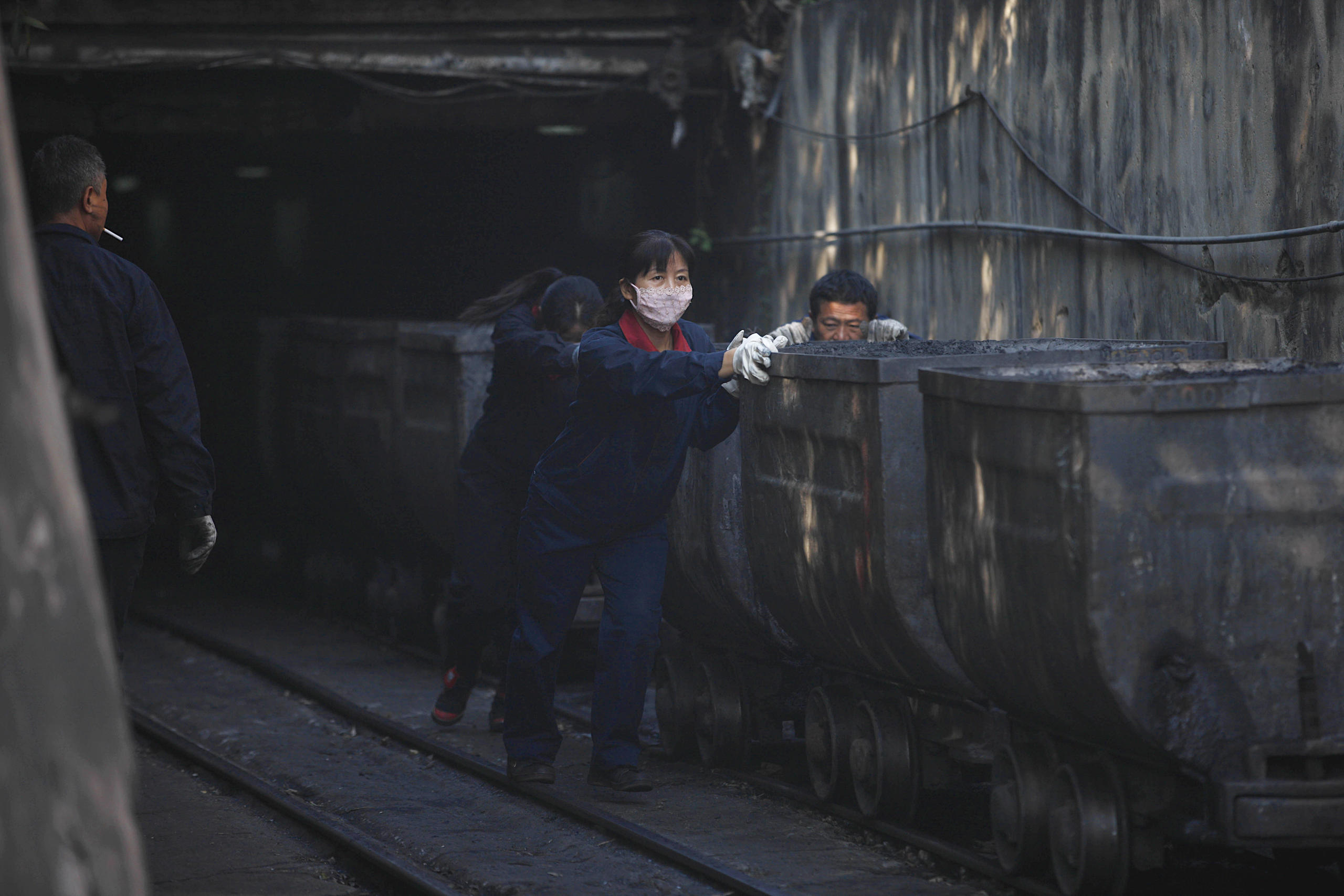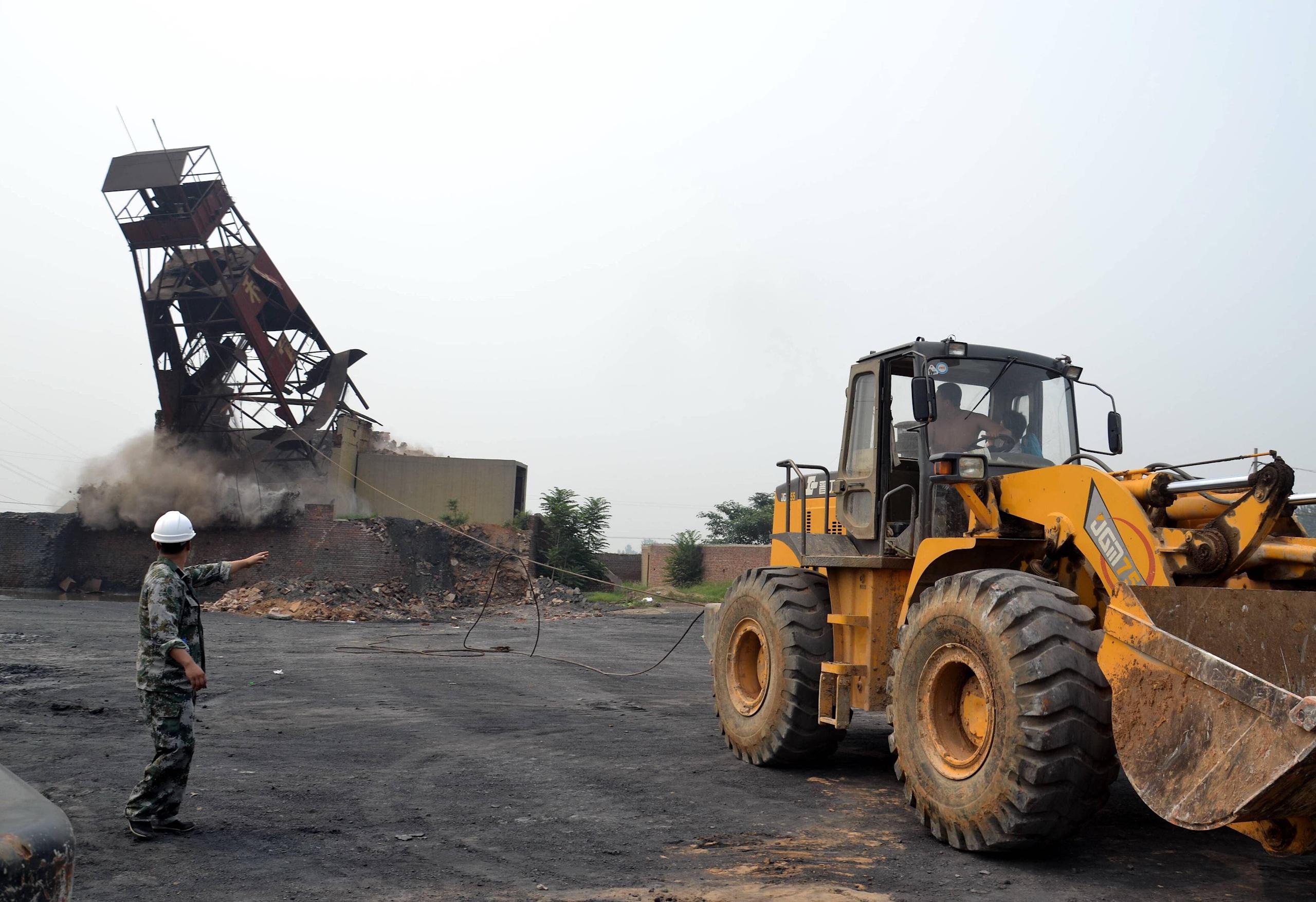Reducing methane emissions was one of the major issues at the COP29 climate conference in Baku.
During the first week of the event, China, the US and the host country Azerbaijan jointly held the Summit on Methane and Non-CO2 Greenhouse Gases. China used the summit to announce a new plan: to reduce the concentration limit for coal mine gas emissions (principally methane) from 30% to 8%. The state will also improve market mechanisms, by allowing companies and enterprises to participate in methane emission controls, and actively promoting international exchanges and cooperation.
Last year, the US and China agreed to reduce methane emissions as part of an historic climate agreement. Donald Trump’s imminent return now leaves the direction of Sino-US relations uncertain. But no matter what the future holds, China has a chance to further reduce its coal methane emissions by adjusting its coal mine-closure strategy. This view is espoused by a study published in April by Tsinghua University’s Institute of Energy, Environment and Economy, which I co-authored.
By analysing China’s policy to eliminate outdated coal capacity, established in 2013, we discovered the potential emissions-reduction effect of mine closures. We found China could reduce methane emissions by 26% based on 2020 levels by 2050 if it prioritises the closure of coal mines with high gas contents.
Methane emission reduction requirements
When it comes to climate change, methane is the second most problematic greenhouse gas after CO2 because it has a stronger warming effect, but also a shorter atmospheric lifespan. The Sixth Assessment Report, published in 2023 by the Intergovernmental Panel on Climate Change, says methane emissions have already caused an increase in global surface temperatures of 0.5C relative to pre-industrial temperatures.
The report points out that meeting the Paris Agreement target of 1.5C requires a 21-57% global reduction in methane emissions by 2030, while 2C requires a reduction of 4-46%.
Since COP26 in 2021, major countries around the world have been in agreement about reducing methane emissions. At present, over 150 countries are signed on to the Global Methane Pledge. This is an agreement to reduce global methane emissions by at least 30% from 2020 levels by 2030. At the subsequent COP27 and COP28 conferences, methane emissions reduction officially became one of the core pillars of global climate governance.
As the country that emits the most methane, China has adopted aggressive reduction policies. On the eve of COP28 in 2023, it issued an action plan with reduction measures and targets.
The coal industry is central to China’s methane reductions. According to China’s official greenhouse gas inventory, the country emitted 64.11 million tonnes of anthropogenic methane in 2018, and coal methane accounted for 40%. With China already committed to peaking carbon emissions by 2030 and achieving carbon neutrality by 2060, its coal consumption is expected to fall sharply, and a large number of mines will close.
So, which strategies should China adopt to close mines and achieve the dual goals of a coal phase-out and methane emissions reduction?
A stroke of luck
In 2013, China began implementing an industrial policy of phasing out obsolete coal production capacity, which had led to the closure of about 12,000 small coal mines by 2019.
This brought unintended benefits. These small mines usually emit methane at a higher intensity than large ones. After the mass closures, our study found the average emissions intensity of remaining, active coal mines had decreased by 23% between 2013 and 2019. This resulted in a reduction of approximately 3.27 million tonnes of methane emissions, equivalent to 91.56 million tonnes of CO2.
Generally, the recovery and utilisation of coal mine gas is widely regarded as the industry’s most important emissions-reduction measure. It involves capturing the gas and using it to generate power. Our research, however, shows that closing emissions-intensive coal mines can reduce emissions by twice as much as the policy to enhance the recovery and utilisation of mine gas. This suggests China could boost its methane emissions reduction using specific coal mine closure strategies.
Planning ahead
Coal methane is produced during the geological formation of coal and is sealed within the seams, or coal deposits. Underground or open-pit mining damages these coal seams, releasing methane. Coal methane is not just released during mining, however. Even in closed mines, methane that remains in the seams (abandoned mine methane; AMM) will continue to escape, causing ongoing climate impacts.
AMM was previously considered a small part of China’s official greenhouse gas inventory, accounting for less than 1% of total coal methane emissions. However, our research estimates that China’s AMM emissions are around 10 times higher than the official inventory. Between 2011 and 2019, AMM emissions increased from 8% of total coal methane emissions to 26%, making it the second-largest source of methane after underground coal mining.
Under a scenario of massive coal elimination to realise carbon neutrality, China’s existing coal mines may be closed en masse in the future, but persistent AMM emissions would be likely. These would then become the coal sector’s largest source of methane emissions by around 2035.
This shows that China’s current focus on the “recovery and utilisation of methane emissions from underground coal mines” as the core of its emissions reduction strategy might require some modifications. It is necessary to consciously target AMM emissions.
Adjusting the mine-closure strategy
China’s current “scale-driven” mine-closure strategy prioritises small mines, as these have lower standards of working and production conditions, and often clash with the industrial development principles of “safe, green, efficient”. Our study presents an alternative scenario for reducing coal methane emissions, whereby priority is given to closing mines with high emission intensities. We call this the “emission-driven” strategy.
From a methane-reduction perspective, our strategy could reduce coal methane emissions by 67 million tonnes, or 26.2%, cumulatively, between 2020 and 2050. Combined with even stronger gas-recovery and utilisation policies, particularly those targeting AMM reductions, there is potential for a reduction in cumulative emissions of 100 million tonnes, or about 39.4%.
Economically, the study also shows that an emissions-driven strategy would cumulatively reduce coal production costs by 4%, as it simultaneously promotes the early closure of high-cost mines.
Data source: Liq Qiang / Graphic: Dialogue Earth
Consequently, the current, scale-driven mine-closure strategy is no longer appropriate from either an emissions-reduction or economic perspective. A viable alternative is for China to prioritise closing mines with greater gas intensities and production costs, which are widely distributed across the south-west of the country. This would be coupled with a delay in closing mines of lower intensities and costs, mainly found in north-west China.
Further optimisation required
While strategy adjustments can help reduce methane emissions, the closure of mines remains a complex issue. As well as the consideration of mine closure optimisation tactics, the impact of closures from multiple social, economic and political dimensions must be assessed.
Furthermore, changing the closure strategy could still pose some emissions challenges, such as an increase in greenhouse gas emissions produced by having to transport coal to areas that no longer mine it. Further research is needed to quantify this.
Remaining exploitable resources and mine lifespans are also key considerations in developing a closure strategy, because some young mines could be closed prematurely under the emissions-driven strategy. This may raise associated stranded-costs concerns.
Additionally, any changes in the mine-closure strategy need to be integrated with targeted gas recovery and utilisation policies, especially strong AMM emissions-reduction policies. However, AMM reduction is still in its early stages in China, and a lack of relevant guiding policies means emissions remain unregulated.
There are also several scientific and managerial issues that hinder China’s progress in AMM reduction. These include insufficient assessment of reduction opportunities in China’s abandoned mines, as well as conflicts over property rights for coalbed methane and coal exploitation.
As an important industrial sector, it is also necessary to fully evaluate the impact of mine-closure strategies on local economies and employment. For regions highly dependent on coal mining, an overly aggressive strategy could damage economic development and lead to social conflict, for instance.
Despite these challenges, I believe the adjustments to the mine-closure strategy proposed in our study make for a suitable path to reducing emissions, one that is worth including in policy considerations. Traditional emissions-reduction measures to improve coal mine gas recovery and utilisation face inevitable physical and economic constraints. Because of this, our suggested strategy adjustments can be an effective complementary measure not just for China, but for other coal-producing countries, too.









